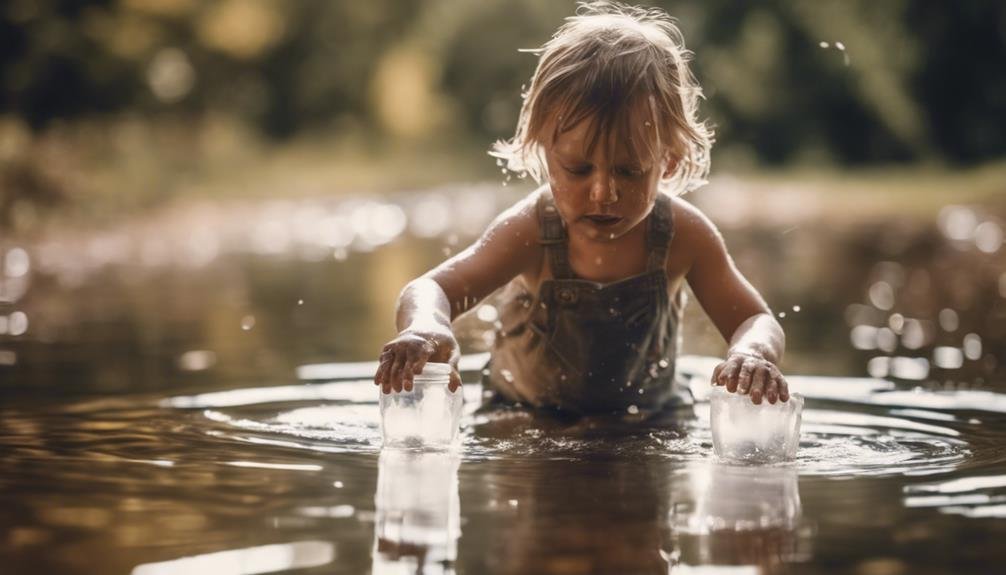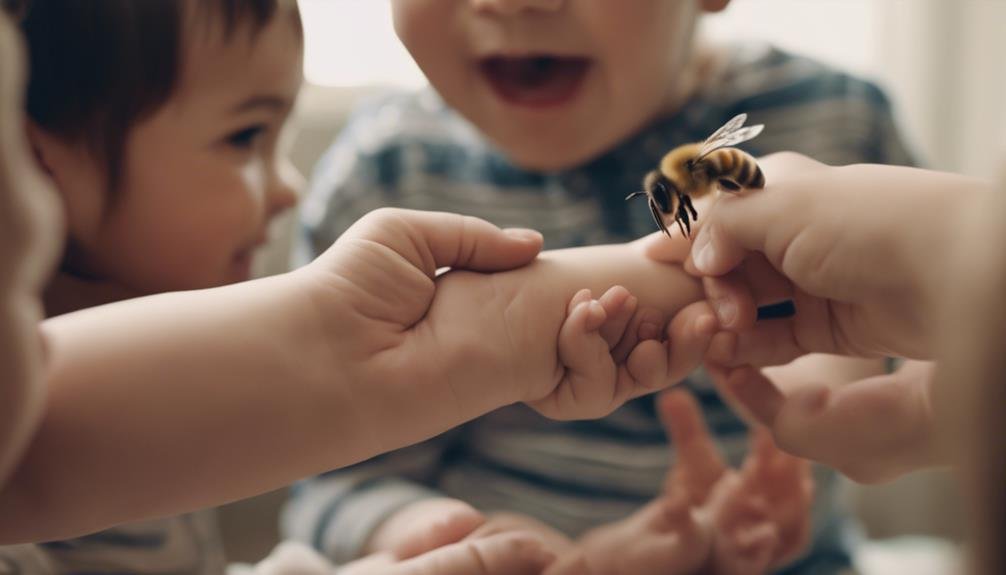As a parent, your child's safety is your top priority. Knowing how to handle common emergencies when it comes to toddlers can make a significant difference in ensuring their well-being. From recognizing signs of choking to managing burns and scalds, being equipped with essential first aid knowledge is crucial. Imagine the peace of mind you'll have knowing you can respond effectively in times of need. Stay tuned to discover key tips that can empower you to be prepared for any unforeseen incidents involving your little one.
Key Takeaways
- Recognize signs of choking: watch for struggling to breathe, inability to speak, and high-pitched noises.
- Treat cuts and scrapes: clean with soap, apply antibiotic ointment, cover with sterile bandage.
- Manage burns and scalds: cool affected area, cover with bandage, watch for infection.
- Deal with nosebleeds: pinch nose, apply cold compress, keep child leaning forward.
- Respond to insect bites: clean area, remove stinger, apply cold compress, watch for allergic reactions.
Recognizing Signs of Choking

Recognize the signs of choking in toddlers to act swiftly and effectively in case of an emergency. It's crucial to stay vigilant, especially when little ones are exploring their world. If you notice a child suddenly struggling to breathe, unable to speak or cry, and making high-pitched noises while inhaling, they may be choking.
Stay calm but act quickly. Begin by assessing the situation and ensuring the child's safety. If the child is coughing forcefully, encourage them to keep coughing to dislodge the object. However, if their coughing is weak or ineffective, it's time for the Heimlich maneuver.
Stand or kneel behind the child, wrap your arms around their waist, and deliver quick upward thrusts below the ribcage.
Treating Cuts and Scrapes
If your toddler experiences cuts and scrapes while exploring or playing, prompt action can help prevent infection and promote quick healing. The first step is to wash your hands thoroughly to avoid introducing any germs to the wound. Gently clean the cut or scrape with mild soap and water, ensuring that any debris is removed. Use a clean cloth to apply gentle pressure if there's any bleeding, and elevate the affected area to help stop the flow.
Applying an over-the-counter antibiotic ointment can help prevent infection. Cover the cut with a sterile bandage or adhesive strip to keep it clean and protected. Remember to change the dressing regularly and keep an eye out for any signs of infection, such as increased redness, swelling, or warmth around the wound. Seek medical attention if you notice any concerning symptoms or if the cut is deep.
Managing Burns and Scalds

To effectively manage burns and scalds in toddlers, it's crucial to act promptly and calmly to minimize pain and prevent further damage. The first step is to remove your child from the source of the burn or scald.
Run cool water over the affected area for at least 10-20 minutes to help soothe the pain and reduce swelling. Remember not to use ice, as it can further damage the skin.
After cooling the burn, gently pat the area dry with a clean cloth and cover it loosely with a sterile bandage or cloth. Avoid using cotton balls or fluffy materials that may stick to the wound.
It's important to keep a close eye on the burn for signs of infection, such as increased redness, swelling, or pus. If the burn is severe or covers a large area, seek medical help immediately.
Dealing With Nosebleeds
During a nosebleed, gently pinch the soft part of your child's nose just below the bridge to help stop the bleeding. This pressure helps constrict the blood vessels and reduces the flow of blood. It's important to make sure your child leans forward to prevent swallowing blood, which can cause nausea. Here are some steps to manage a nosebleed:
| Step | Description |
|---|---|
| Stay calm | Comfort your child and reassure them that it will be okay. |
| Pinch the nose | Pinch the soft part of the nose for about 10 minutes. |
| Apply cold compress | Place a cold cloth or ice pack on the bridge of the nose. |
Responding to Insect Bites and Stings

When an insect bite or sting occurs, promptly clean the affected area with soap and water to help prevent infection. It's essential to remove any stingers left in the skin by scraping them out with a fingernail or a credit card. You can apply a cold compress to reduce swelling and relieve pain. Keep an eye on the affected area for signs of an allergic reaction, such as difficulty breathing, swelling of the face or throat, or a widespread rash, and seek immediate medical attention if any of these symptoms occur.
For mosquito bites, you can soothe the itching by applying a paste made of baking soda and water or using an over-the-counter anti-itch cream. To prevent further insect bites, dress your toddler in light-colored clothing that covers their skin, use insect repellent, and avoid areas where insects are abundant, such as stagnant water or uncovered food. Remember, staying calm and acting promptly can help alleviate discomfort and prevent complications from insect bites and stings.
Frequently Asked Questions
How Can I Prevent My Toddler From Getting Nosebleeds?
To prevent your toddler from getting nosebleeds, keep their nails short to avoid accidental scratching, ensure they stay hydrated, use a humidifier in dry environments, and gently dab their nose with a moist cloth if it does happen.
What Should I Do if My Toddler Swallows a Small Object?
If your toddler swallows a small object, stay calm but act swiftly. Check for choking signs. Call emergency services if needed. Don't try to remove it yourself. Seek medical help to prevent complications.
Can I Use Home Remedies for Treating Insect Bites on My Toddler?
If your toddler gets insect bites, you can use home remedies like applying a cold compress, using aloe vera gel, or giving them a bath with oatmeal. Always monitor for any signs of an allergic reaction.
Should I Be Concerned if My Toddler Gets a Minor Burn?
If your toddler gets a minor burn, it's normal to feel concerned. However, most minor burns can be treated at home. Keep the area clean, apply a cool compress, and monitor for any signs of infection.
What Is the Best Way to Remove a Splinter From My Toddler's Skin?
To remove a splinter from your toddler's skin, wash the area with soap and water. Use sterilized tweezers to gently pull out the splinter in the direction it entered. Clean the area and watch for signs of infection.
Conclusion
Remember, accidents can happen anytime, anywhere.
Being prepared with first aid knowledge for toddlers is like having a superhero cape – it gives you the power to protect and comfort your little one in times of need.
So, equip yourself with the essential skills, stay alert, and be ready to spring into action when your child needs you the most.
Your quick response could make all the difference in keeping your child safe and sound.




